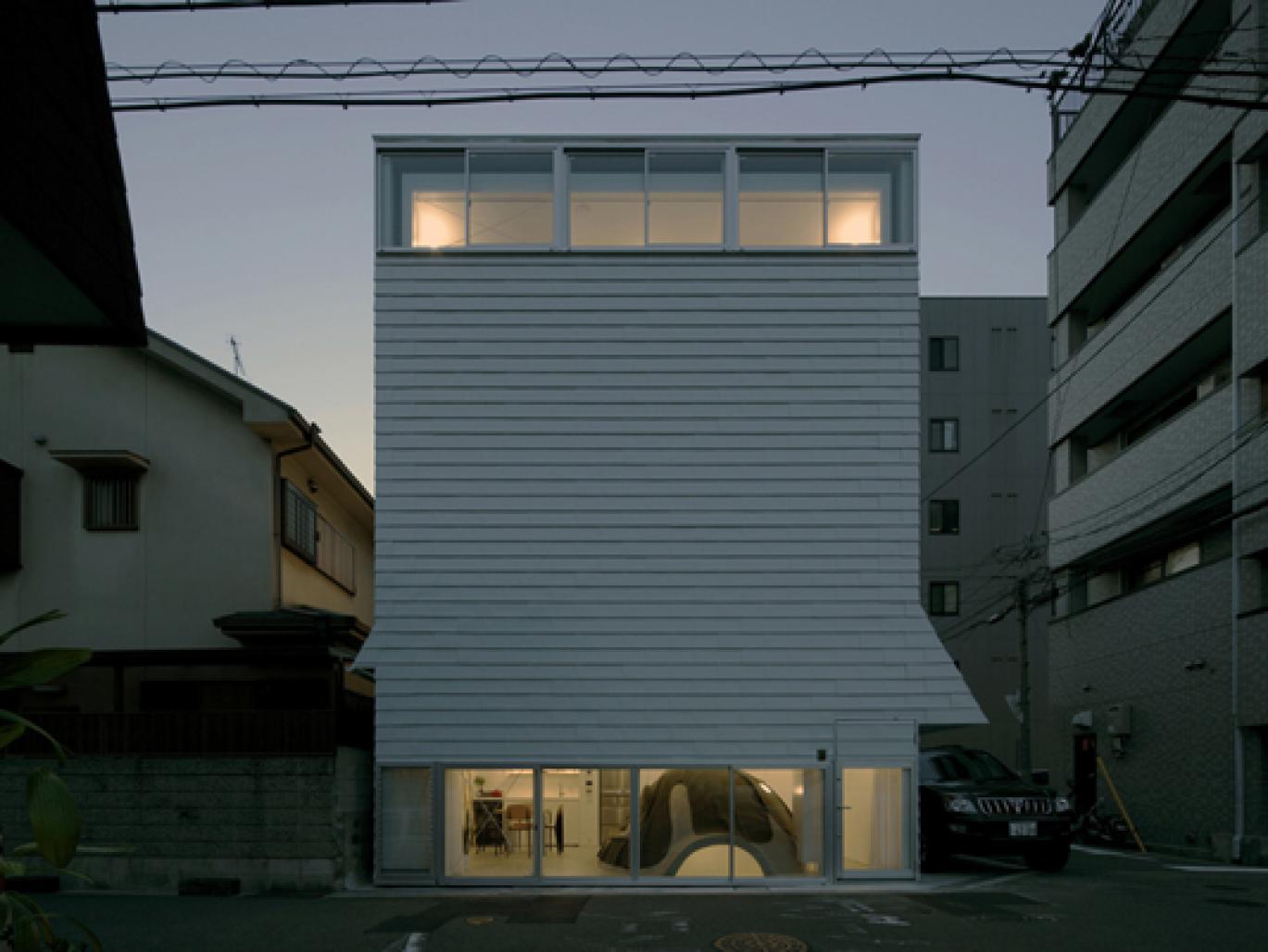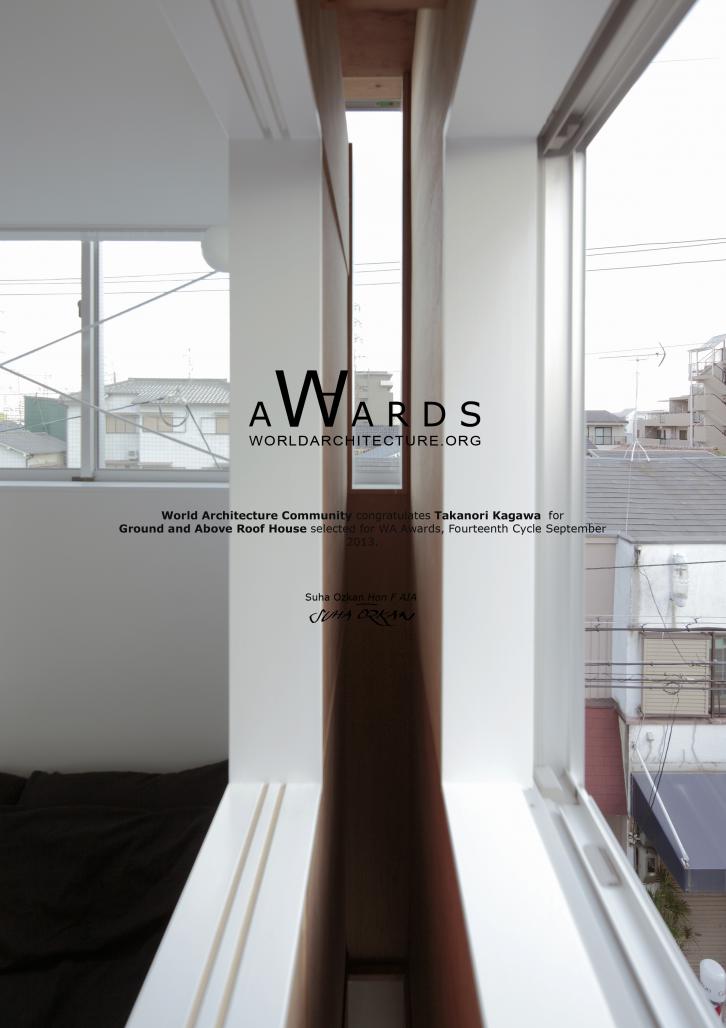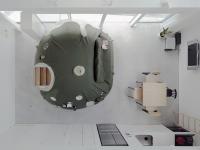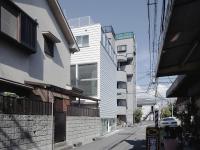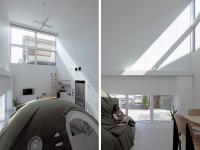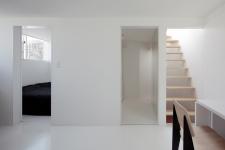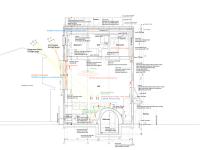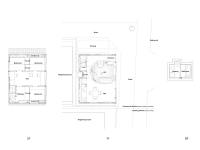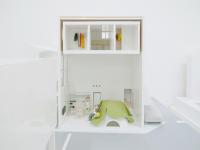A two-story wooden house
This house is situated at a street corner located one lot behind from a main street in a residential area near a railway station.
The site borders 2 streets on the north and the east, and in the east (a longitudinal border) there is a T-junction and a open-air parking lot on a culvert. This area has a peculiar atmosphere of openness. Signboards and plant pots are put on the street and there are many long-term residents, who are often seen chatting around the street.
This site is like a “special valley spot of the zoning regulation”. A zoning change line (Commercial district to Housing district) is designated near the southern border line of the lot. So, the house can be built slightly higher than the neighboring one in this site. Under such surroundings, a two-story wooden house is built. The 1st floor which connects to the street for creating living space linked with lively outside, and the 2nd floor is taken a physical distance from the busy street and its floor slab is lifted higher than the neighboring eaves for taking enough sunlight into the 1st floor.
In winter, the kamakura-shaped hill with a bathroom inside can store solar heat collected through a large window allocated upper south part on the 1st floor. It can also be functioned as various living goods such as a sofa when watching TV, a verandah when sitting from outside with a window open, a screen from the entrance, a storehouse and a play place for children.
Bedrooms of the 2nd floor are minimum size so the 2nd floor hall is used for all activities such as study or reading other than sleeping. From the 2nd floor window, an above roof view completely different from the 1st floor opens up.
This spatial composition linked up a series of motions in a house with the movement of wind, heat, users and goods may only be called “two-story wooden house” at present. However, I think it is different from the usual one because there is no appropriate name for this composition at present.
Heating Environment
In winter, sunlight is stored in the concrete hill, collected from the large window allocated under the 2nd floor slab and upper south part on the 1st floor designed for receiving sunlight and solar heat. The position of the slab and the height of the hill is determined with referencing to the sun’s altitude in midwinter and the neighboring eaves height. Floor heating is installed in the concrete hill and the flat area to prepare for days not suitable for heat storage or for the area where the sun’s rays do not strike for seasonal conditions.
In summer, sunlight is shaded up by an electrical blind and heated air is stored between windows, which will be exhausted from the 2nd floor window, through the ventilation slit acquired by installing double wall in the north, the south and roof. In winter, the ventilation slit can be used as the heat storage and supplies warm air through air inlets Hill Cover
The hill cover is designed as a set of the hill as a method to deal with the regeneration risk of concrete and slow start-up of the floor heating. The cloth commonly used for sofa is sewn in two-ply and urethane is placed in the cushion, which improves heat storage and durability. Rather than using draping, the plane form method is used for making the 3D curved surface of the hill. It is designed by using a drawing and a model and finally measurements are taken by using sample cloth. Pockets on the cover can be used for holding mobile phones, remote controls or newspapers and if needed more pockets can be easily installed more.
2009
2010
location: Ibaraki-city, Osaka-pref
principal use: Residence
structure: Wood·2stories
area: site53.31m2·floor61.92m2
date: September,2010
Architects: Takanori Kagawa + Junko Kishigami (SPACESPACE)
structural design: TAPS
photo:Koichi Torimura
Ground and Above Roof House by Takanori Kagawa in Japan won the WA Award Cycle 14. Please find below the WA Award poster for this project.

Downloaded 105 times.
